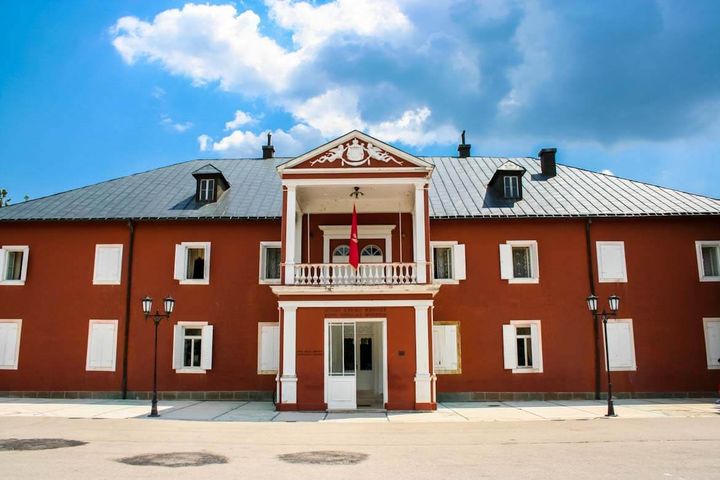Map view
Central Montenegro
Places mentioned in the guide
While visitors are naturally drawn to the bustling southern coastline or the stunning northern mountains, to truly understand Montenegro, you must explore its core. Here’s your guide to discovering the historic and cultural heart of the country.
Lovćen National Park
The Lovćen National Park is a haven for nature lovers and is dominated by Mount Lovćen, which gave the country its name ("Black Mountain" in reference to the appearance of Mount Lovćen when covered in dense forests). It is especially famous for being home to the Njegoš Mausoleum, the final resting place of Montenegro’s beloved poet and ruler, Petar II Petrović-Njegoš. The journey to the mausoleum involves a climb up 461 steps, but the panoramic views from the top are well worth the effort. If you are driving up from Kotor, the serpentine road will challenge your driving skills but will offer stunning views of the bay along the way.
Cetinje
Once the royal capital of Montenegro, Cetinje is steeped in history and culture. The town is home to numerous museums, galleries, and historic buildings. Key sites include the Cetinje Monastery, which houses important religious relics, and the King Nikola’s Palace, now a museum showcasing the country’s royal heritage.
Located near Cetinje, Lipa Cave is one of the largest and most beautiful cave systems in Montenegro. Guided tours take you through the cave’s impressive underground passages, showcasing stunning stalactites, stalagmites, and other geological formations. It’s a fascinating adventure into the subterranean world.
Lake Skadar
Shared between Montenegro and Albania, Lake Skadar is the largest lake in the Balkans and a haven for birdwatchers and nature lovers. The Montenegrin side of the lake is a national park, offering boat tours and numerous hiking opportunities.
The charming village of Virpazar is the main gateway to Lake Skadar. From here, you can take boat trips to explore the lake’s diverse flora and fauna, including its famous pelicans. Virpazar is also the center of Montenegro's wine industry and the region is dotted with small family-owned wineries offering guided visits and tastings.
Another picturesque village, Rijeka Crnojevića, is known for its beautiful setting along the river of the same name. The village is perfect for a peaceful retreat and offers lovely boat trips and scenic views. Few minutes drive away, the Pavlova Strana viewpoint provides one of the most iconic views in Montenegro.
Murići Beach and Godinje Beach offer tranquil spots to relax and swim with a few islets and monasteries as a backdrop, a sharp contrast with the bustling beaches on the coast.
Podgorica
Despite being the capital of Montenegro, Podgorica is not the most appealing city and is mostly used as a transport hub by visitors to reach the other parts of the country. Among the few points of interests, the impressive Cathedral of the Resurrection of Christ features stunning architecture and intricate frescoes. Located just outside Podgorica, the Niagara Falls are a popular swimming spot for locals in summer and offer a picturesque setting for a picnic.
Ostrog Monastery
Carved into a sheer cliff face, Ostrog Monastery is one of the most important pilgrimage sites in the Balkans. Dedicated to Saint Basil of Ostrog, the monastery consists of two levels connected by a steep path. The upper monastery offers stunning views and houses the saint’s relics, while the lower monastery provides accommodation for pilgrims.














